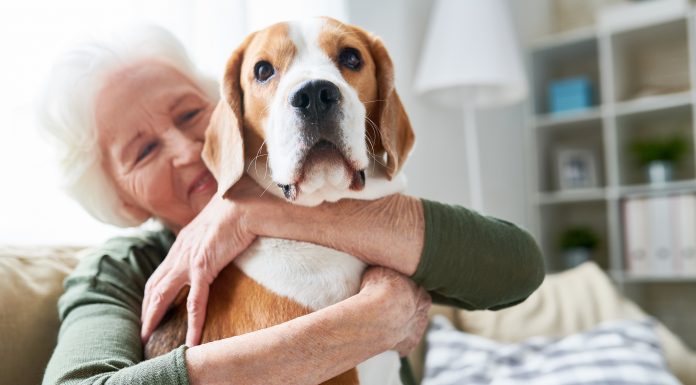Back pain is one of the most common health concerns in this day and age. Thousands of people are visiting the doctor’s chamber every day with complaints about back pain.
Back pain can happen due to various reasons. Arthritis, poor posture, carrying weights and psychological stress are some of the common sources.
Elderly people are the most common victims of this. Therefore, often physiotherapists recommend various types of exercises that are ideal for seniors.
In this article, we’re going to explore some of the most effective back pain stretches for seniors. They are easy to practice and are proven to be quite effective.
Important Precaution
Make sure to consult with your doctor before starting any kind of back pain stretches. Especially if you’re older.
However, in most cases, back pain stretches are considered to be quite beneficial for people of all ages.
The exercises explained below should be performed by sitting on a chair. Use one of the heavier dining table chairs. Sitting on a rigid surface will ensure a better result.
Other than a sturdy chair, you don’t need any other equipment for back pain stretches.
Stretching Neck and Chest
At first, seat straight on the chair with your feet flat on the floor. Hold the base of your skull with both hands.
Intertwine your fingers and run your thumbs by the ears. This way your head will rest on your hands.
Gently let your head rest on both hands and turn your face up towards the ceiling. Breathe in deeply. While you exhale, loosen up the left elbow so that it points towards the floor.
Your right elbow should be pointing straight towards the ceiling. This way your neck should feel a gentle stretch.
Your elbows shouldn’t move more than two inches. Take a deep breath twice and return to your previous neutral position. The spine should be upright at this stage.
Repeat the whole movement in the opposite direction; left elbow pointing towards the ceiling and right elbow downwards. This should be done three times for each side.
This’ll stretch the trapezius and scapulae muscles located in the neck. It’ll also work up your oblique, pectorals as well as erector spinae.
Bend your Back
Sit on the chair with your feet straight on the floor. Gently hold your hip with both hands. Now inhale deeply and bend backward. Point your chin towards the ceiling.
Your mid and upper spine should bend backward as you continue with this. Stay at the bent position for five deep inhales and then gently move back to the normal position.
This movement should be continued for three to five times per session. This back stretch will work up your anterior muscles of the neck, spinal extensors as well as pectorals.
Reach Out your Back Slowly with Shoulder Blades
At first sit straight on the chair, inhale deeply and interlace your hands behind your back as you exhale. Take a deep breath again and sit tall, stretching your spine upwards.
Now gently push your shoulder blades downwards. As you breathe out, your arms should be straightened up if you’re holding your hands.
If they’re not clasped pull them towards the opposite direction. This’ll gradually open up your upper back. Take three deep breaths and free up your arms.
Return to the normal sitting position. The whole process should be repeated three times during your workout session.
Your pectorals will stretch with this movement along with the anterior deltoids.
Gentle Back Stretch in Cat Cow Position
For the cat-cow position, you need to sit straight with your legs lying in a 90-degree angle. Place both hands on your knees.
The heel of your hands should be placed on the outer side of your leg with fingers facing each other. Take a deep breath and as you exhale, bend backward while your hands simultaneously increase pressure on your thighs.
Stop once you face towards the ceiling. You should feel like your hip is stretching outward.
Now take another deep breath, stretch your shoulders inward and pull your belly towards your spine. Move your face downward and press on your legs (instead of knees) with both hands.
Repeat the whole procedure slowly for three to five times while you follow the breathing sequence.
These movements will stretch your serratus anterior, the erector spinae, the rectus abdomius and the external oblique of your abdomen.
Back Stretch with Gentle Twist
For the gentle twist, sit straight on the chair. Make sure that there is some room between you and the back support of the chair.
Your knees should be kept in a 90-degree angle. Now take a deep breath and press downwards with your hip. While you do that, gently lift both arms on top of your head.
Now as you exhale, gently turn to your right and hold your right knee with your left hand. Keep your right hand wherever it feels comfortable.
However, don’t use it to put more pressure on your spine. Otherwise, you may hurt yourself.
Now take another deep breath while you are in that position and twist little deeper as you exhale.
Take three to five more breaths and then release the twist. Follow the same movement on the other side. Continue the whole twist twice for each side.
Several of your neck muscles including the splenius capitis and sternocleidomastoid gets worked up with this movement. The erector spine and serratus anterior also gets stretched.
Conclusion
All these gentle back stretches are excellent for elderly people. These movements will work up the muscles located around your back, affecting the spinal cord and neck.
Doing these back stretches regularly will surely help anyone to ease back pain. However, it’s important to follow each and every step carefully to avoid any kind of unwanted injury.
Beside the back stretches, proper sitting arrangements are also vital to avoid any kind of back pain. It’s also important for seniors to use back pain recliners.
Proper sitting and sleeping posture and regular physical activities can help almost everyone to avoid back pain.
























